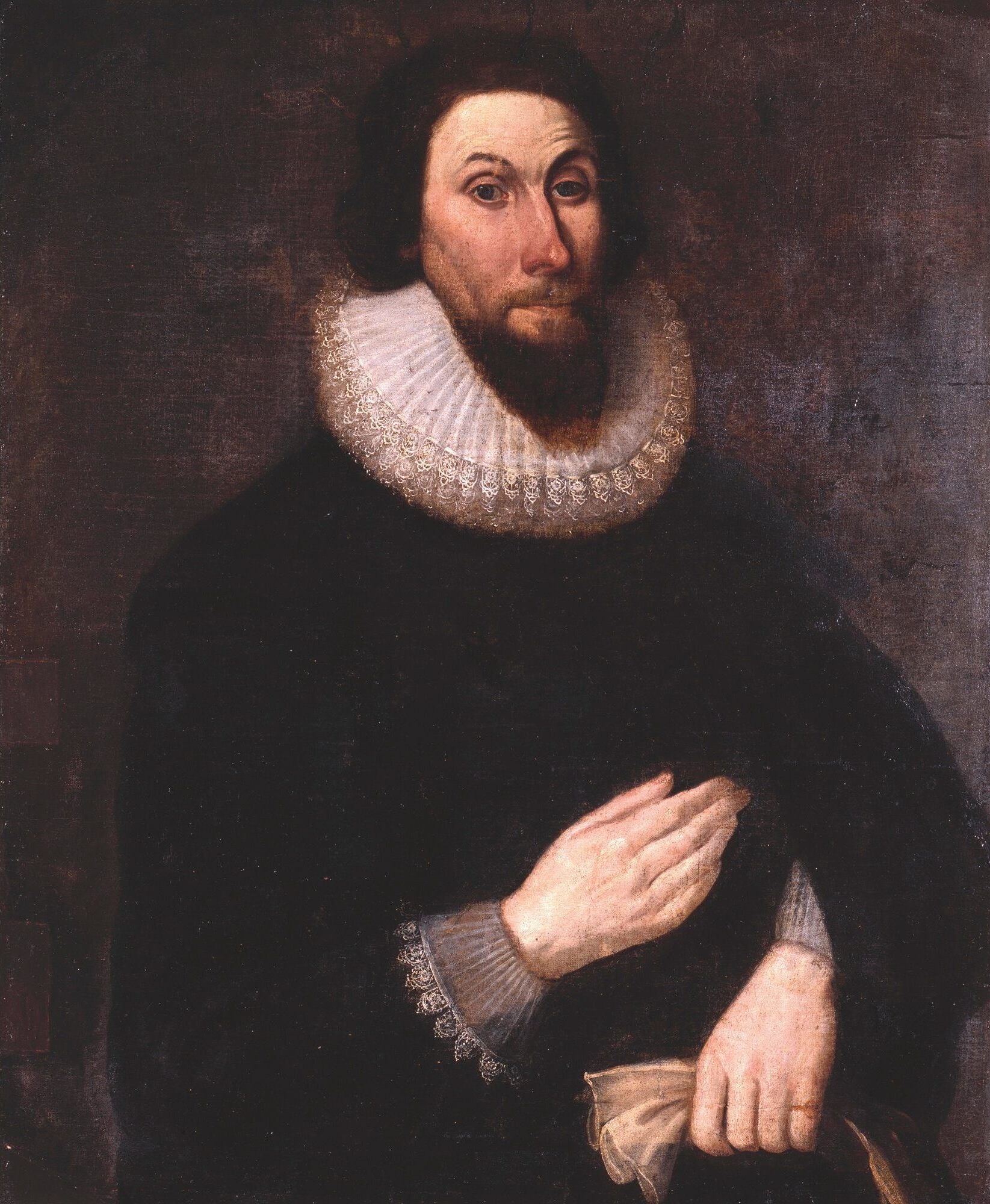Mary Dyer Hanged on Boston Common, 1660
 |
| Mary being led to the Common. |
At the age of 22 she married William Dyer, and sometime within the next three years they emigrated to Boston.
By the time she was 26, she was already something of a rebel. She was a follower of Anne Hutchinson, who was organizing groups of men and women to attend Bible study in strict opposition to the theocratic laws of the Massachusetts Bay Colony. Anne preached that God spoke directly to everyone, not just the clergy. Ultimately, the Dyers were among those who were driven out from the colony. They went with Hutchinson to a new life in Portsmouth, Rhode Island.
Before she left Boston, however, Dyer had given birth to a stillborn child, who was deformed. The Dyers buried him secretly, but sometime after they had been expelled from the colony, officials learned of the birth. John Winthrop, the Massachusetts Governor, had the body exhumed. In order to further demonize the "heretics," he characterized the child as a monstrosity, and further evidence of the Dyer's alienation from God:
 |
| Governor Winthrop |
Fourteen years after her expulsion from Massachusetts, Dyer and her husband returned to England. There she heard the preaching of George Fox, and joined the Society of Friends, known to some as the Quakers. Her husband returned to Rhode Island the same year, but Mary Dyer remained in England another five years, when she returned to Boston to protest new laws banning the Quakers.
She was arrested and expelled from Boston in 1657. Traveling and preaching throughout New England, she was arrested in Connecticut in 1658. After her release in Connecticut, she went back to Boston, in order to visit two Quakers who had been arrested there, William Robinson and Marmaduke Stephenson. She was also arrested in Boston, and this time she was banned from returning.
Her third visit to Boston was in 1659. This time she was sentenced to death, along with Robinson and Stephenson. Robinson and Stephenson were hanged, but Dyer received a last-minute reprieve. Her son had pleaded for her life -- against her wishes.
She returned to Boston a fourth time, in 1660, to deliberately defy the anti-Quaker law. This time there was no reprieve. Offered a final chance to repent, she said, "Nay, I came to keep bloodguiltiness from you, desireing you to repeal the unrighteous and unjust law made against the innocent servants of the Lord. Nay, man, I am not now to repent." Those were her final words.
First Written Record of Scotch Whisky, 1495
On June 1, 1494, a Tironensian monk, Friar John Cor, paid duty on "eight bols of malt wherewith to make Aqua Vitae for King James IV." This was the first recorded evidence relating to the making of Scotch Whisky.Aqua Vitae, literally "water of life", was a term for the distilled spirits of an area. In Gaelic the word is translated usquebaugh, which later became uskey, and then whisky. The eight bols, I am told, is about 1,120 pounds, and is enough to make about 1,400 bottles of whisky. King James would have been staying at his Falkand palace, a hunting lodge near Lindores Abbey, when he placed his order. James reportedly enthusiastically enjoyed the "ardent spirits", so it is not surprising that he would commission the order.
Why would monks be making whisky? At the time, whisky was valued primarily for its medical properties. Remembering what the hygienic standards of the time were, it may have been safer to drink than water.
(Oh, and if you're wondering whether the spirit is spelled whisky or whiskey -- it all depends on where it's made. The Irish and American versions are spelled with an e, the rest not.
Frank Morgan Born, 1890
 |
| Frank Morgan, circa 1945 |
Frank Morgan will be forever remembered for his role as the Wizard of Oz. Actually, he played several roles in the iconic movie. Besides the Wizard, he was Professor Marvel (the huckster Dorothy meets before her "dream"), the gatekeeper to the Emerald City, the driver of the Horse of a Different Color, and an armed guard at the castle. The movie made him so popular that MGM gave him a lifetime contract.
Morgan was a fairly well-known character actor before his role in The Wizard of Oz. He started out in silent movies, but his career took off when the talkies began. He specialized in roles in which he played kindly, but somewhat befuddled middle-aged men. He received an Oscar nomination for his role as the cuckolded Duke of Florence in The Affairs of Cellini, and another for his supporting role in Tortilla Flat.
Morgan's birth name was Francis Phillip Wuppermann. His father was the co-founder of the Angosturo-Wupperman Corporation, which distributed Angosturo Aromatic Bitters. Francis followed his older brother, who had taken the name Ralph Morgan into show business.
He was said to be a kindly and generous man: Margaret Hamilton (the Wicked Witch in the movie) said that she got teary-eyed whenever she watched the scene where the Wizard digs into his black bag for gifts for his friends. "Frank Morgan was just like that in real life," she said. "Very generous."

No comments:
Post a Comment